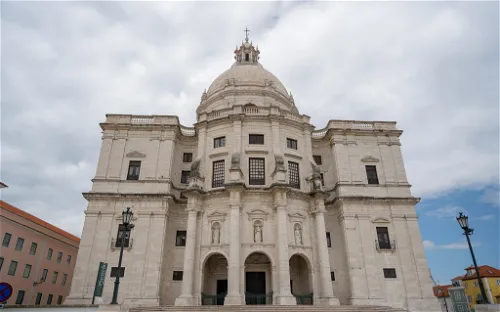National Pantheon and its collection
The Church of Santa Engrácia, a 17th-century monument in Lisbon, Portugal, serves as the National Pantheon. This historic site is the final resting place of many significant Portuguese personalities. Its location in the Alfama neighbourhood places it near another notable Lisbon monument, the Monastery of São Vicente de Fora.
Architectural Design of the Church of Santa Engrácia
The design of the Church of Santa Engrácia is credited to João Antunes, a royal architect and one of Portugal's most significant baroque architects. The church features a centralized floorplan in the shape of a Greek cross. Each corner of the church is adorned with a square tower, and the façades exhibit undulating patterns reminiscent of Borromini's baroque designs.
The Church of Santa Engrácia as the National Pantheon
During the First Portuguese Republic in 1916, the Church of Santa Engrácia was converted into a National Pantheon. It is the final resting place of several notable Portuguese personalities. These include Presidents of the Republic Manuel de Arriaga, Teófilo Braga, Sidónio Pais, and Óscar Carmona, presidential candidate Humberto Delgado, writers João de Deus, Almeida Garrett, Guerra Junqueiro, Aquilino Ribeiro, and Sophia de Mello Breyner Andresen, fado singer Amália Rodrigues, and footballer Eusébio.
History & Anthropology Religion Religious building Historic house Person & Artist
#6 History & Anthropology in Portugal #6 Historic houses in Portugal #1 Person & artist museums in Portugal #2 Religion museums in Portugal #3 Religious buildings in Portugal #5 History & Anthropology in Lisbon #5 Historic houses in Lisbon #1 Person & artist museums in Lisbon #1 Religion museums in Lisbon #2 Religious buildings in Lisbon #133 History & Anthropology in Europe #67 Historic houses in Europe #19 Person & artist museums in Europe #40 Religion museums in Europe #35 Religious buildings in Europe

